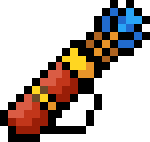

Rizvi, Kishwar, "Between the Human and the Divine: The Majālis al-ushshāq and the Materiality of Love in Early Safavid Art," in Walter Melion, Michael Zell, and Joanna Woodall (eds), Ut Pictura Amor: The Reflexive Imagery of Love in Artistic Theory and Practice, 1500-1700, Leiden: Koninklijke Brill NV, 2017: 233. Komaroff, Linda, Collecting Islamic Art at the Los Angeles County Museum of Art: A Curatorial Perspective, Los Angeles: Art Catalogues LACMA, 2017: 18-20. Sheffield (eds), No Tapping around Philology: a Festschrift in Honor of Wheeler McIntosh Thackston Jr.'s 70th Birthday, Wiesbaden: Otto Harrassowitz, 2014: 379. Komaroff, Linda, "A Turkman Prisoner or Prisoner of Love?" in Alireza Korangy and Daniel J. The motif of the Turkman prisoner is known primarily in Safavid painting a few instances occur in Mughal India. This strong similarity suggests that a tracing was made from the Topkapi version, perhaps datable to the 1560s to early 1570s, which was reversed and used as pounce to produce the LACMA painting. 2156, which has margins dated between Hegira 980 / AD 1572 and Hegira 982 /AD 1575. The LACMA painting is very similar to one in a Persian-made album in the Topkapi Palace Library, Istanbul, H. The motif of the Turkman prisoner first appears in Persian painting around the middle of the sixteenth century. How Object was obtained:Ĭollection of Roland Yazhari, Portland, Oregon, until 2000 (sold to) LACMA, gift of the Ancient Art Council, Iran Trip 2000. Claiming to haunt the street of the beloved by night, the lover moans, "Happy is that prisoner who has someone to come to his rescue," which is inscribed, almost like a caption beneath the bent leg of the captive. Some linguists believe it may have emerged as an imitation of the sound or a slight tremble, while others believe it is an alteration of the Middle English verb quaveren (now quaver, which also means ‘to vibrate or tremble’). The verses give voice to the torments of unrequited love, a common theme in classical Persian poetry. Quiver, meaning ‘to tremble,’ dates back to the late 15th century.Its origin is uncertain. 857/1453), which surrounds the painting, it is possible to suggest a less literal meaning for this prisoner imagery. Based on the Persian poetry by Amir Shahi of Sabzavar (d. Not surprising, given his extensive armaments, he does not seem humbled by his captivity rather, apart from the introduction of the shackling yoke, such prisoner figures are often nearly indistinguishable from contemporaneous paintings of similarly clothed and armed Uzbek princes or warriors. Characteristically, he carries a sheathed sword, a dagger, a quiver with arrows, a bow and case, a flail, and a whip. He wears a sleeveless outer robe over a long-sleeved tunic, with an elaborately knotted sash his head is covered by a peaked cap. As is typical, the prisoners’ physiognomy and clothes denote his Turkman ethnicity. A crossbar at the back of the prisoner’s neck completes the restraint. The prisoner depicted here, as in all such representations, is fettered by a palahang, a device made from a forked branch, to which one wrist is attached by an additional band of wood or metal. The motif was copied and subtly interpreted in both drawings and paintings, which were probably intended for placement in albums. The Turkoman prisoner is a common subject in Iranian art. Ink, opaque watercolor, and gold on paper Dimensions: Hegira second half of 10th century / AD second half of 16th century Museum Inventory Number:

Los Angeles, United States of America Holding Museum:Ībout Los Angeles County Museum of Art (LACMA), Los Angeles Date of Object: 4 Quivers can also be upgraded, thereby increasing the capacity of Arrows Link can carry at a time. When a Bow is obtained, it usually comes with its respective Quiver, though this is usually not explicitly stated or shown. Information is available in: English, Arabic. Quivers are bags in which Link can carry Arrows for use with a Bow.

Wondrous items with charges can never be intelligent.This item has been added to the Database within the Explore Islamic Art Collections project. Intelligent items have extra abilities and sometimes extraordinary powers and special purposes. An 01 result indicates the wondrous item is intelligent, 02-31 indicates that something (a design, inscription, or the like) provides a clue to its function, and 32-100 indicates no special qualities. Usually use-activated or command word, but details vary from item to item. Anyone can use a wondrous item (unless specified otherwise in the description). This is a catch-all category for anything that doesn’t fall into the other groups.


 0 kommentar(er)
0 kommentar(er)
